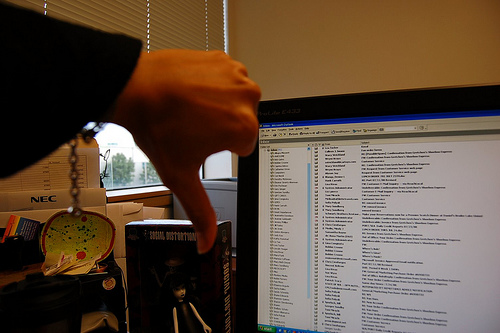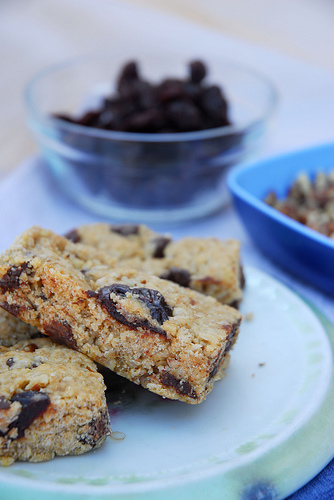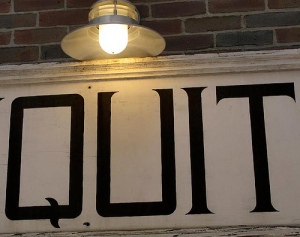I often struggle with maintaining an optimal level of organization throughout my work days. I’m easily distracted — particularly by new e-mail messages — and can lose hours of precious work time reading incoming e-mails and the assortment of accompanying attachments and Web links. Other times, I log into my e-mail network to send a quick message only to feel overwhelmed by the vast quantity of unread or neglected e-mails waiting for me. Next thing I know, it’s quitting time and I haven’t achieved many of my goals for the day.
Imagine my excitement when, for a work project, I had to read a book addressing online journalism that just happened to dedicate a whole chapter on digital organization. Finally, the answers to my inefficient work methods were being handed right to me — literally! Through this book, I learned of a Web site called Getting Things Done, which was founded by David Allen.
One of Allen’s best suggestions, in my opinion at least, is to spend no more than two minutes on each e-mail, whether replying, filing, or deleting the message. If you can’t respond to the e-mail in two minutes, Allen recommends filing it into a folder. However, this organizational approach only works if you already have established a detailed folder system so you can quickly and efficiently determine which folder is most appropriate and then — here’s the important part — remember to return to that e-mail for the necessary follow-up action.
I have always aimed to respond quickly to messages that require an immediate reply and often succeed at achieving that goal. It’s the follow-up that I struggle to remember, sometimes leaving my messages unanswered for long, inappropriate amounts of time. To remedy such a problem, Allen suggests creating a “waiting on” folder for storing e-mails that you can’t reply to until you receive additional information, and a “read this” folder for storing e-mails that contain attachments or more information than can be read in two minutes. You can go back to those when you have time or print them out to read later.
Well, I took this concept and ran with it, creating several additional folders for e-mails addressing subject areas about which I write, each freelance project I have worked on, each client I work with, and new ideas for future projects, among others. By setting up all these topic-specific folders, I know exactly where to place all my messages that I want to save – and they don’t clog up my inbox. I can now call up any one of them at a moment’s notice, if needed.
Allen’s overall goal is to look at each e-mail message only once, thus saving time, energy, and productivity. I have implemented this method in my own daily work routine and, so far, it has been working like a charm. I have even started to carve out time in the mornings and late afternoons to read the e-mails I place in various folders throughout the day. Now, I’m able to focus my attention on the required work at hand, while still taking breaks to read all the formerly neglected messages I receive. Hopefully, these tips can help alleviate some disorganization in your daily work days too!
 aturally refuel your get-up-and-go tank.
aturally refuel your get-up-and-go tank. am able to slowly wake, watch the news, read a few pages of my book, snuggle with my dog, and close my eyes off and on for a few minutes before actually rising out of bed and starting my day.
am able to slowly wake, watch the news, read a few pages of my book, snuggle with my dog, and close my eyes off and on for a few minutes before actually rising out of bed and starting my day. longer than three minutes (know how we supposedly live in an “ADD nation”? I could often be the posterwoman!), I whip out my phone to read the latest news headlines, check in with friends on Facebook, or play a game of solitaire. I must fess up — my name is Dina and I am addicted to the technology of a smart phone.
longer than three minutes (know how we supposedly live in an “ADD nation”? I could often be the posterwoman!), I whip out my phone to read the latest news headlines, check in with friends on Facebook, or play a game of solitaire. I must fess up — my name is Dina and I am addicted to the technology of a smart phone. njoying foods that cool us down and quench our thirst. My favorite summer food is watermelon, which conjures up plenty of fun warm-weather memories from my youth. I still enjoy a good watermelon in the summer, but now that I have a more mature palate, I like to create new and unique-tasting dishes in which watermelon’s flavor shines. My current favorite dish is a salad with watermelon, sweet onions, and feta cheese. Although it might sound oxymoronic to combine these ingredients together, the end result is simply scrumptious!
njoying foods that cool us down and quench our thirst. My favorite summer food is watermelon, which conjures up plenty of fun warm-weather memories from my youth. I still enjoy a good watermelon in the summer, but now that I have a more mature palate, I like to create new and unique-tasting dishes in which watermelon’s flavor shines. My current favorite dish is a salad with watermelon, sweet onions, and feta cheese. Although it might sound oxymoronic to combine these ingredients together, the end result is simply scrumptious!

 Intense eye aches used to invade my workday. I took breaks, but by that time, my eyes were so strained and fatigued that I couldn’t focus on anything. All I wanted to do was close my eyes and shut out the world. Nothing short of the complete darkness and comfort of a cold compress over my eyes eased my pain. And at that point, it usually took several hours to feel better. That’s not how I wanted to spend my workdays.
Intense eye aches used to invade my workday. I took breaks, but by that time, my eyes were so strained and fatigued that I couldn’t focus on anything. All I wanted to do was close my eyes and shut out the world. Nothing short of the complete darkness and comfort of a cold compress over my eyes eased my pain. And at that point, it usually took several hours to feel better. That’s not how I wanted to spend my workdays.
 Two weeks into a new job, I realized I had bit off more than I could chew. I was working late every night, I was stressing about meeting deadlines, and I was generally feeling stressed and unhappy. What was I to do? My gut and intuition were telling me to quit, particularly before I became more invested in the company, colleagues, and projects, after which it would be harder to make a clean break.
Two weeks into a new job, I realized I had bit off more than I could chew. I was working late every night, I was stressing about meeting deadlines, and I was generally feeling stressed and unhappy. What was I to do? My gut and intuition were telling me to quit, particularly before I became more invested in the company, colleagues, and projects, after which it would be harder to make a clean break.  As most of the country experiences frigid temperatures this winter, I suspect many people gravitate toward warming comfort foods like soups to take the edge off the chill in the air. But the store-bought cans of soups are loaded with sodium, often busting your recommended daily allotment of the salty seasoning in just one or two servings. That’s why I make my own soups with fresh ingredients, loads of nutrients, low sodium content, and almost no fat. One of my favorites is a chickpea and cannellini minestrone that takes about 30 minutes to prepare, but tastes like it has been cooking all day long.
As most of the country experiences frigid temperatures this winter, I suspect many people gravitate toward warming comfort foods like soups to take the edge off the chill in the air. But the store-bought cans of soups are loaded with sodium, often busting your recommended daily allotment of the salty seasoning in just one or two servings. That’s why I make my own soups with fresh ingredients, loads of nutrients, low sodium content, and almost no fat. One of my favorites is a chickpea and cannellini minestrone that takes about 30 minutes to prepare, but tastes like it has been cooking all day long.